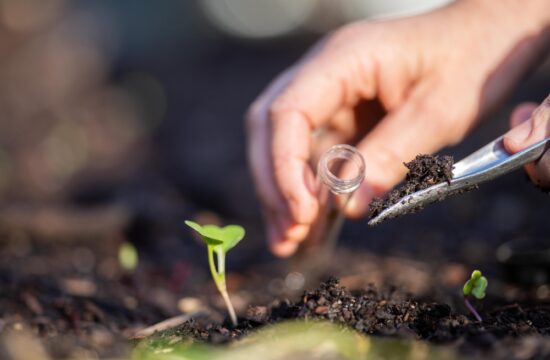Introduction
In agricultural and commercial farming, soil nutrients are the unsung heroes of crop health and productivity, quietly pulling the strings behind yield and quality. Without proper nutrient management, plants are left scrambling for the essential elements they need to grow, thrive, and impress the neighbors.
This guide breaks down the best methods for measuring soil nutrients, providing all the tools and techniques you’ll need to keep your soil in top shape. By understanding the nutrient profile of your soil and implementing the appropriate amendment practices, you can maximize crop production while ensuring your soil stays happy and healthy for the long haul.
The Impact of Soil pH on Nutrient Availability
The Role of Soil pH in Plant Growth
Different crops have different preferences for pH levels, which directly affect the absorption of nutrients by plants from the soil. For instance, corn and wheat perform well in slightly acidic to neutral soils, typically around pH 6-7. However, soybeans thrive in slightly more acidic soil, around pH 6. Introducing these crops to soil outside of their preferred pH range can hinder nutrient uptake and reduce growth potential.
Climate’s Effect on Soil pH
Climate has a notable influence on soil pH, with regional weather patterns gradually shifting soil acidity or alkalinity. In areas with frequent rainfall, essential nutrients such as calcium and magnesium are often washed away, leaving the soil more acidic over time. On the other hand, in drier regions, limited rainfall leads to the accumulation of salts and minerals, which raises soil pH and results in more alkaline conditions.
Soil Nutrient Testing Methods
Importance of Regular Soil Testing
Soil testing is a vital practice in agriculture, ensuring optimal nutrient levels are maintained while minimizing environmental harm. By understanding the precise nutrient content of the soil, farmers can apply fertilizers more accurately, in turn, preventing over-fertilization and reducing harmful nutrient runoff into nearby water bodies. This precision helps to protect ecosystems from issues like water pollution and algal blooms.
Additionally, regularly measuring the nutrients in your soil promotes healthy soil microbial activity, which improves soil resilience and water retention, supporting sustainable farming practices such as crop rotation and reduced tillage. Beyond environmental benefits, soil testing also leads to cost efficiency by ensuring that only the necessary amount of fertilizers and amendments are used, making farming operations economically and ecologically sustainable.
Methods for Producing an Accurate Sample
To effectively modify soil pH and maximize growth potential, begin by testing the soil annually. It’s also important to note that high-value crops benefit from more frequent, seasonal testing. Fall is an ideal time for obtaining measurements of soil nutrients, as labs are less busy, and amendments (substances that enhance your soil’s richness and ease of cultivation) can break down slowly over winter.
To ensure an accurate soil sample for testing, collect soil samples from the top six inches of soil, where most nutrient-absorbing roots are concentrated. After digging six to eight samples from different parts of your plot, mix these samples together and place two cups of the combined soil in a plastic bag for testing.
Understanding Test Results
After sending in your sample to a lab and receiving your results, it can be difficult to accurately interpret them and determine the next steps in improving your soil’s vitality. Analyzing soil test results is essential for making informed decisions about nutrient management and soil health. Test results are typically ranked into categories such as very low, low, medium, high, and very high, which reflect the soil’s ability to supply essential nutrients to plants.
Enhancing Soil Fertility
Soil Amendments for Improved Texture and Nutrients
The rankings from these test results guide the amount of fertilizer needed to reach optimal nutrient levels. For example, if a test indicates that soil pH is below 6, it is too acidic and requires the addition of ground limestone. Conversely, if the pH is above 7.5, soil sulfur should be applied to lower alkalinity, especially for vegetable crops. By carefully analyzing these results, farmers can adjust the amount of needed soil amendment to meet the specific needs of their crops, ensuring a balanced and productive growing environment.
Refer to the following charts to calculate the amount of lime or sulfur necessary for balancing your soil’s pH:
Pounds of Limestone Needed to Raise pH (per 1,000 square feet)
| pH | Sandy Soil (lbs) | Loam Soil (lbs) | Clay Soil (lbs) |
|---|---|---|---|
| 4.0-6.5 | 60 | 161 | 230 |
| 4.5-6.5 | 50 | 130 | 190 |
| 5.0-6.5 | 40 | 100 | 150 |
| 5.5-6.5 | 30 | 80 | 100 |
| 6.0-6.5 | 15 | 40 | 60 |
Pounds of Sulfur Needed to Lower pH (per 1,000 square feet)
| pH | Sandy Soil (lbs) | Loam Soil (lbs) | Clay Soil (lbs) |
|---|---|---|---|
| 8.5-6.5 | 45 | 60 | 70 |
| 8.0-6.5 | 30 | 35 | 45 |
| 7.5-6.5 | 10 | 20 | 25 |
| 7.0-6.5 | 2 | 4 | 7 |
Fertilization Records and Soil Health
Maintaining historical records of soil test results and fertilization practices is crucial for optimizing nutrient management and improving crop yields. By tracking changes in soil nutrient levels and fertilizer inputs, farmers can enhance the efficiency of their nutrient use, reducing the risk of over-application and preventing nutrient buildup that could harm both crops and the environment.
For instance, excessive phosphorus levels can lead to runoff that negatively impacts nearby water bodies. Keeping detailed records also allows for long-term trend analysis; if soil tests consistently show stable nutrient levels over several years, the sampling frequency can be reduced to once every two or three years, saving time and resources. This strategic approach to soil management not only supports sustainable farming but also promotes long-term soil health.
Staying Updated with Industry Advancements
Current Advancements in Soil Testing
In the last decade, many new incentives for sustainable agricultural practices have been introduced as technology continues to advance, making these practices all that much easier and more efficient. Recent research and legislative developments have introduced new soil testing methodologies that focus on enhancing both soil health and crop yield efficiency.
Most recently, the Innovative Practices for Soil Health Act of 2024 is a bipartisan effort aimed at promoting long-term soil health and agricultural sustainability in the U.S. One of the act’s key goals is to strengthen USDA conservation programs, such as the Conservation Stewardship Program (CSP) and the Environmental Quality Incentives Program (EQIP), which now offer enhanced financial support for farmers adopting perennial agriculture and agroforestry practices. These systems not only improve soil health and reduce erosion but also boost overall agricultural productivity. The act also provides increased technical assistance and establishes four national and regional agroforestry centers to offer additional resources to farmers, helping them manage these innovative practices more effectively.
In addition to soil health, the act incorporates climate resilience strategies by promoting greenhouse gas emissions reduction planning. This initiative aligns sustainable agriculture with environmental goals, benefiting farmers by reducing their environmental footprint and potentially qualifying them for additional incentives. With these incentives in place, the act makes it easier for farmers to transition to practices that foster soil health and enhance resilience to climate change and extreme weather.
Product Guides and Recommendations
Tools for Soil Nutrient Measurement
When it comes to optimizing soil health and ensuring strong crop yields, several tools and products can help you get the most from your land. A lab test kit provides an easy, accurate way to assess soil nutrient levels and comes with expert recommendations to address any deficiencies. Once you know what your soil needs, you can adjust it with products designed to manage nitrogen, enhance phosphorus availability, or boost micronutrient uptake. These products ensure nutrients stay in the soil and are accessible to plants, improving root development, plant health, and overall productivity.
For more specific issues, plant growth regulators enhance nutrient uptake and improve crop yields, while micronutrient fertilizers target particular deficiencies in your soil. Verdesian Life Sciences offers all these solutions and more. With our lab testing services, we’ll provide a tailored nutrient plan for your soil, making sure your crops receive exactly what they need for sustainable, efficient growth.
FAQs about Soil Nutrients
What Are the Key Nutrients to Test for in Soil?
- The primary nutrients to test for in soil include nitrogen (N), phosphorus (P), and potassium (K), as they are critical for plant growth. Additionally, testing for secondary nutrients like calcium, magnesium, and micronutrients like zinc or iron can help fine-tune fertilization strategies.
How Do I Adjust Fertilization Strategies Based on Soil Test Results?
- Soil test results provide nutrient levels, which help you determine if fertilizers are needed and in what quantities. Adjust your fertilization by adding the deficient nutrients in appropriate amounts, avoiding over-application to prevent nutrient runoff and optimize plant health.
How Often Should I Test My Soil for Nutrients?
- It’s recommended to test your soil annually, especially in high-value crop fields. If the results show stable nutrient levels over consecutive years, testing can be done every two to three years to monitor soil health efficiently.
How Does Soil pH Affect Nutrient Availability to Plants?
- Soil pH plays a significant role in nutrient availability; for example, acidic soils can lock up phosphorus, making it unavailable to plants. Maintaining an optimal pH range (generally around 6-7) ensures that essential nutrients remain accessible to crops.
Final Thoughts: Mastering Soil Nutrient Management for Thriving Crops
In summary, precise soil nutrient testing and management are key to maximizing crop health and yield. By using soil test kits, adjusting pH levels, and fine-tuning fertilization strategies based on accurate data, you can ensure your soil is set up for success. Whether you’re balancing nutrients or making sure your soil’s pH is just right, these practices help boost plant growth while minimizing environmental impact. Apply the tips from this guide, stay informed on the latest advancements, and you’ll keep your soil — and your crops — thriving!
At Verdesian, we use the latest in agricultural science to enhance the health of crops. Our products are used in numerous crops to maximize yield, improve crop quality, increase nutrient availability, and much more. Contact us today for more information.


